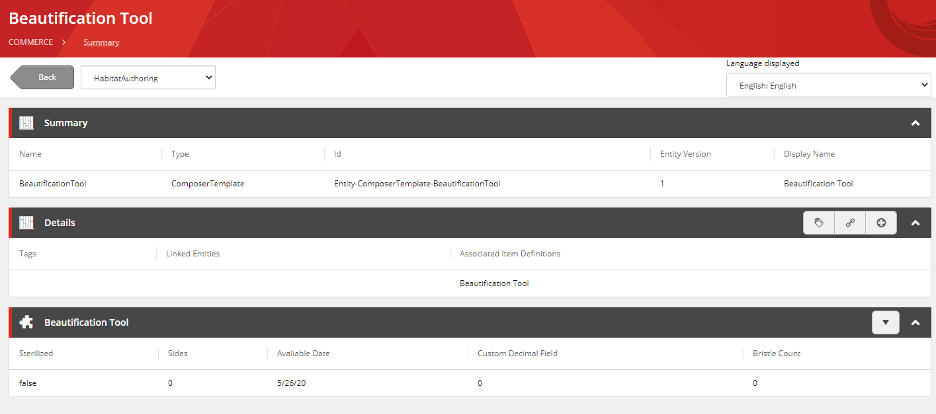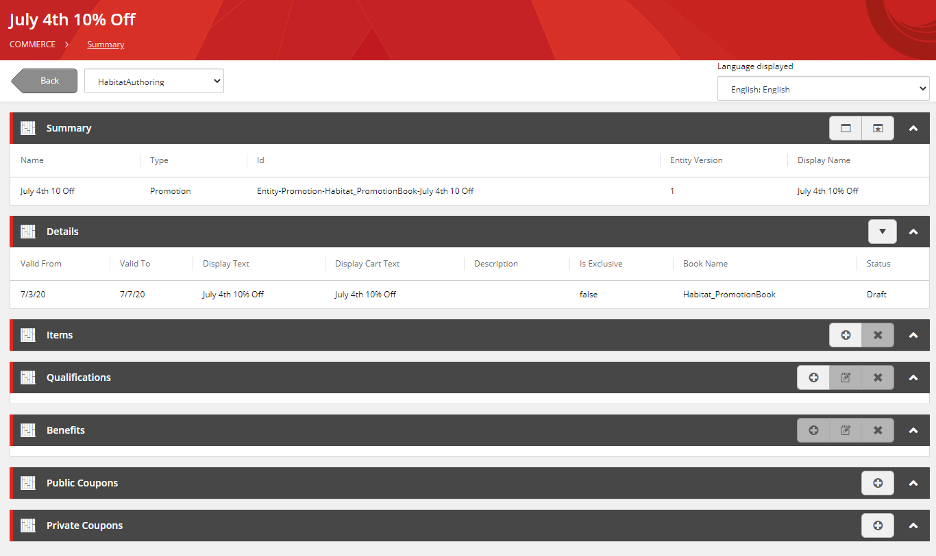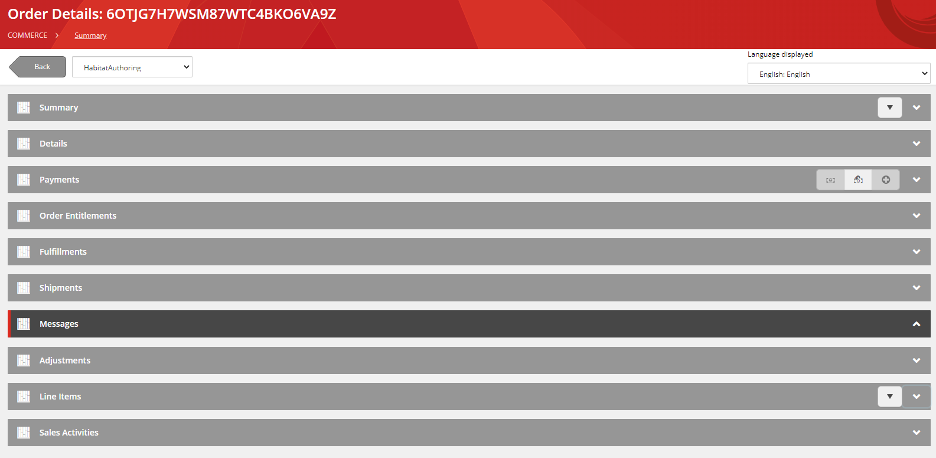Blog
Amrit Raj
Managing Partner & Sitecore MVP
Sitecore Leads XC Part 1
Why Sitecore is the Leader in Experience Commerce: Part 1
Sitecore is a natural choice for industries and organizations looking to go beyond transactional commerce and create a content-rich personalized commerce experience. Examples include destination travel, hospitality, health, nutrition, lifestyle, member-based organizations, beauty and fashion industries.
Here are some reasons why I think Sitecore is the leader in Experience Commerce:
- Standard Direct to Consumer (DTC) Commerce: Sitecore offers all standard direct-to-consumer commerce features
- Enterprise CMS: Sitecore is natively built on enterprise CMS, offering all content related features for content-rich commerce
- Site Analytics: Sitecore natively captures and provides sitewide analytics, including user path analysis and engagement goals-values for measuring visitor/campaign effectiveness and attribution
- User Analytics & CRM: Sitecore also captures and provides user-level (both anonymous and logged-in user) analytics and basic CRM features: user profile, conversion, commerce data and visit data for the users
- Profiles & Personalization: Sitecore has built-in support for profile and pattern cards that can be used for user segmentation and individual personalization at scale
- Marketing Automation: Sitecore’s marketing automation templates and flows can be used to engage and reengage customers and prospects using emails and promotions
- Rules Engine: Sitecore has an extensible rules engine that allows marketers to personalize user experiences and offer incentives based on a number of factors including campaign, channel, commerce parameters, date, device, visitor data, page, product, etc.
- Content Hub: With the acquisition of Stylelabs, Sitecore now also covers Digital Asset Management (DAM), Product Content Management (PCM) and Marketing Resource Management (MRM)
Sitecore natively offers all these tools and features (except for Content Hub that came through an acquisition but is now integrated into the platform). Most of the other platforms will require integration with 2-3 products to deliver similar feature parity.
I will be describing these modules and tools and how they apply to commerce in a series of blogs starting with part 1 – DTC Commerce.
Why Sitecore is Leader of Experience Commerce – Part 1: Direct-to-Consumer (DTC) Commerce
Sitecore ships with a pre-built storefront (SXA Storefront) that can be used as-is or as a baseline to build your storefront. This storefront includes 40+ commerce components, standard OOTB features include:
- Storefront template with ability to apply UX themes or extend
- Guest and logged-in experience
- Home page with hero images, carousel, featured products
- Landing page and product listing page
- Search with dynamic facets and filters
- Product detail page with multiple images/videos, product info, features, specs, SDS/TDS, related products and accessories
- Cart and mini cart
- Shopping funnel including one-click checkout
- Split checkout to support physical and virtual goods in a single cart/checkout
- My account including order history and wallet
- Pre-built content and commerce components: rich-text components, image components, video components, collections, social, etc.
- Subscription commerce
- Dynamic kits and bundles
- Aggregate products with variants
- Flexible promotions engine with several OOTB promotions like BOGO, 5% off, free shipping, coupons, etc.
- Order notification for order submission, updates and tracking
- Support for both physical products and virtual goods and services
- Support for localization with multiple currencies and languages
- Plugin model for 3rd party add-ons:
- Payment
- Tax
- Shipping
- Reviews and ratings
- Social
- SEO support including canonical URLs
- WCAG support
Sitecore has also launched its Quick Start program that allows companies to a launch a digital storefront fast – in less than a month!
Flexible & Extensible Catalog Model
Sitecore ships with a standard catalog object model that can extended using the composer templates. Composers allow merchandisers to configure different sets of attributes for different product families in the same catalog thus providing a rich catalog model without cluttering all products. Composer attributes can be used in filters, search, facets and product displays.
The picture below shows 3 composer templates – Beautification Tool, Computer and TVs; each having its own set of attributes in addition to the standard catalog attributes. Beautification Tool attributes are shown in the second picture.


Relationship entities allow merchandisers to establish multiple relationships between products. Examples include:
- Cross-sell
- Up-sell
- Replacement
- Warranty
- Related
- Accessory
- Training
The picture below shows 4 relationships for a product (called sellable item in Sitecore): Installation, Related, Training and Warranty.

Catalog data can be further enriched using CMS data templates. Marketing data like description, usage, etc. can be kept separate from the core catalog and can be managed as CMS data templates. This is helpful when commerce data may be coming from ERP or PIM and will be enriched by marketing in Sitecore.
Sitecore OOTB supports multi-lingual localization for catalog.
Commerce Operations Management
Sitecore includes most of the commerce operations modules that can used for managing the back office for a commerce storefront.
Merchandising
Sitecore supports multiple catalogs and multiple taxonomy/navigation. Products can be surfaced under multiple categories on the storefront. Merchandising features include:
- Manage catalogs
- Manage categories
- Manage products
- Manage images/assets for products
- Manage related products
Pricing Management
Sitecore can rely on pricing being synced from an ERP system or pricing can be managed in Sitecore. OOTB each product has a list price, but multiple pricing models are supported including:
- Item Price
- Dynamic Price
- Price books -> price cards -> price snapshots
- Adjustment
- Price Tier
Inventory Management
Sitecore can rely on an ERP/OMS/WMS for inventory information or inventory can be managed in Sitecore. Sitecore distinguishes between availability service and inventory service (two different plugins). Inventory plugin provides a simple structure supporting quantity-on-hand as well as pre-order fields and backorder fields.
Promotions Management
Sitecore supports an extensible promotions engine designed around 6 core entities:
- Promotion books that can be related to one or multiple catalogs
- Promotion books has multiple promotions with standard meta-data like start date, end date, etc.
- Qualifications define a set of conditions related to product or cart or cart line or shopper or the environment (e.g. current date) that must be met
- Benefit defines an actual benefit that the customer gets. Benefits can be related to cart or cart line or fulfillment (free shipping) or shopper (loyalty rewards)
- Items optionally include/exclude certain products from the promotion
- Public or private coupons
The picture below shows different elements of “July 4th 10% off promotion”.

Order Management
Sitecore ships with an order management module that can integrate with an ERP/OMS or can be used to provide standard OMS functions. The plugin model allows organizations to extend features and also plug-in 3rd-party payment, tax, shipment and fulfilment.
The order entity supports order header, lines, entitlements, payments, shipments, adjustments and line-level RMA.
The picture below shows all elements of order entity.

Customer Management
The customer master in Sitecore is primarily targeted towards B2C customer/user. Customer entity supports user-level fields and multiple addresses.
